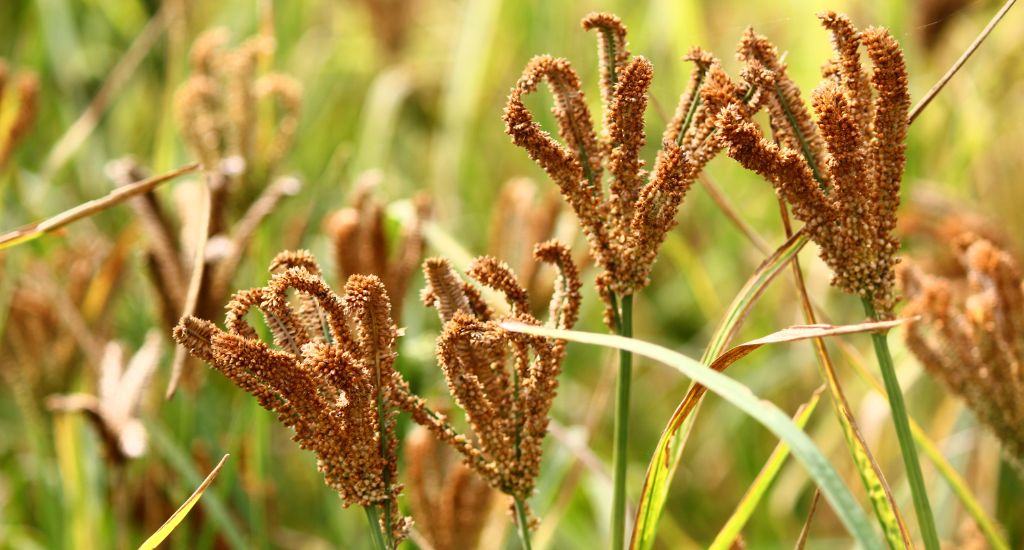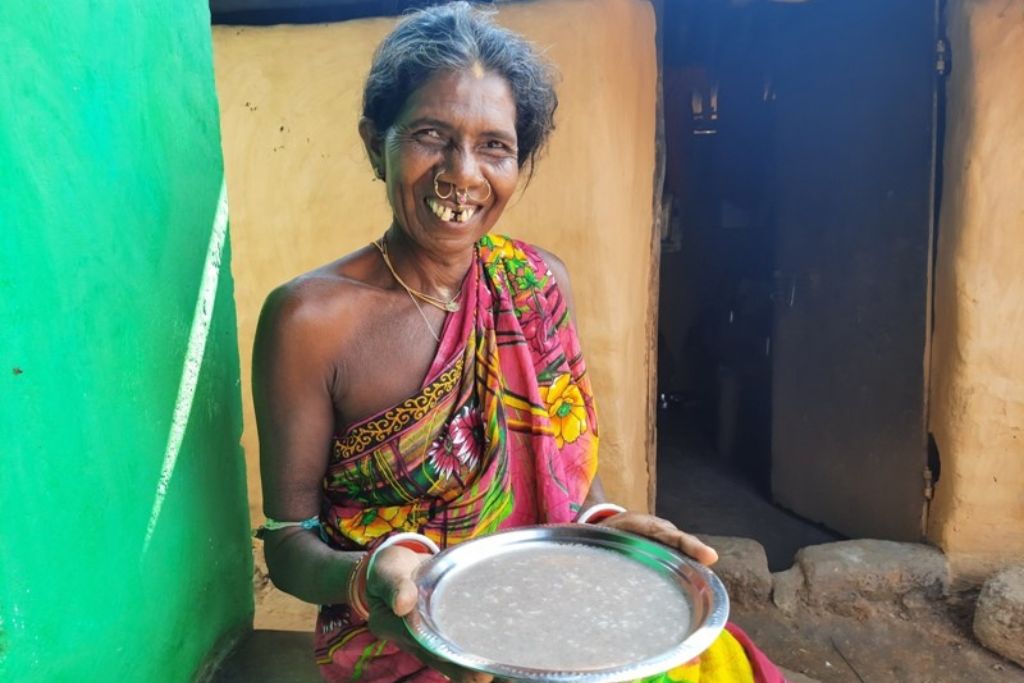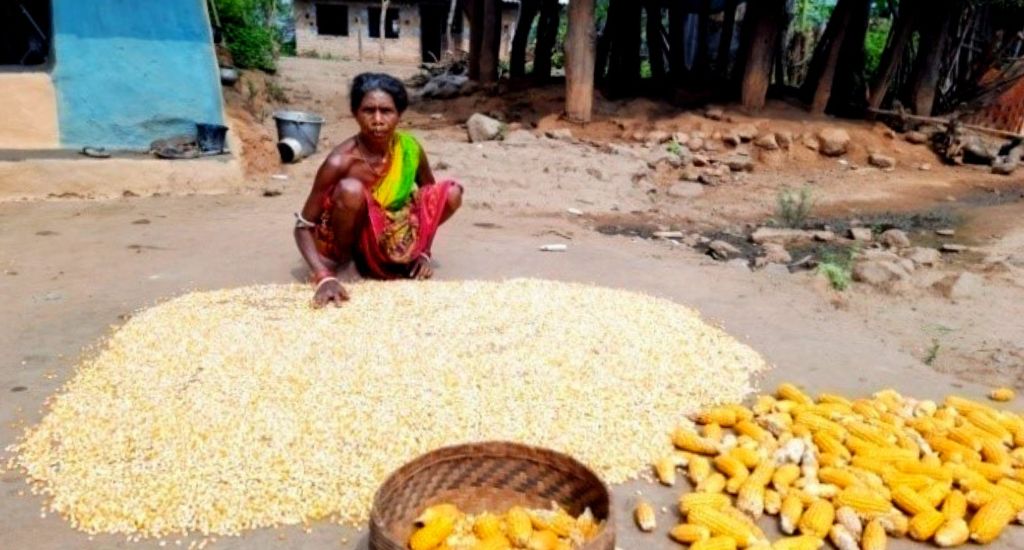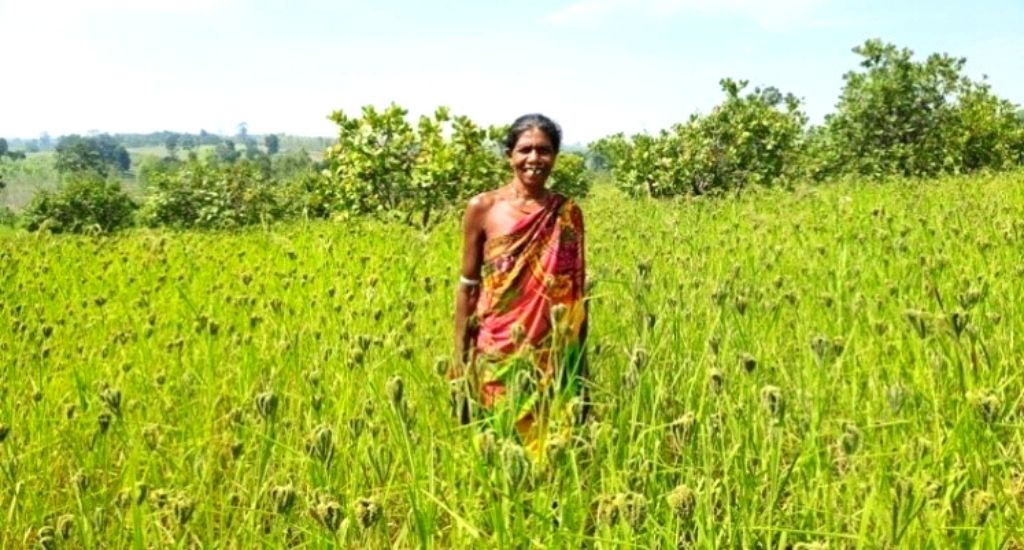
How millet magic is empowering women in rural Odisha
Loaded with nutritional benefits and climate resistant properties, finger millet can be a life-transforming crop – especially if mini-millet flour mills, making the processing easier.

Loaded with nutritional benefits and climate resistant properties, finger millet can be a life-transforming crop – especially if mini-millet flour mills, making the processing easier.
“We’re thinking of switching from harvesting maize to finger millet,” said Sashi Machha (59), a member of a self help group (SHG) from Aarapai village in Koraput, Odisha.
Why?
Farmers like Sashi are beginning to see the merits of millet. It is not only “climate resistant” – a huge plus in drought-prone Odisha – but its prodigious productivity brings more yields.
“We grew maize on 0.25 acres of land and spent 15,000 rupees to get 15 kilograms of maize eventually. In comparison, we are expecting 10-12 quintals of finger millet from 1.5 acres of land,” she said.
The small seeded grass species of millet is a cereal grown around the world in semi-arid and tropical regions requiring minimal input. It is used both as human food and fodder.

Not only is it climate resilient, but once harvested it can be stored for longer durations too, making it ideal for famine-prone regions. Given its impressive profile, millet is capable of addressing food and nutritional insecurity in India.
According to the Indian Institute of Millet Research, millets are packed with nutritional benefits. Its consumption is linked to the prevention of breast cancer, blood pressure, diabetes, asthma, cardiovascular diseases and constipation.
The finger millet flour processed from a mill is cleaner than that of hand pounding.
It also detoxifies the human body and can help in lowering cholesterol.
Millets are popularly known as nutri-cereals because they contain most of the nutrients required for the functioning of the human body. They are gluten-free and contain more nutritional value than rice.
Aware of millets’ importance, the government of Odisha introduced the Odisha Millets Mission in 2017-18 to bring more millet to its fields and plates. It linked finger millets to various government schemes and programmes, like the minimum support price scheme, the public distribution system and child development programmes.
Also Read | Odiya tribes discover the wonders of millets
The mission provides financial incentives to farmers for improved agronomic practices, encouraging farmers to scale up.
Further, the India government proposed to the United Nations General Assembly that 2023 be the “International Year of Millets (IYM).”

“India will steer the IYM 2023 celebrations worldwide and organise campaigns to promote the cultivation and consumption of millets” said India’s Prime Minister Narendra Modi.
Millets must go through an extensive post-harvesting process before they can be cooked. The traditional ways of doing this require a lot of hard work.
Not surprisingly, this has sometimes led to a reluctance of the women farmers in Koraput, Odisha to grow millets. Alternatively, they would have to travel a few kilometres to get it processed in the mills. Consequently, this increased expenditure and time, causing a dip in millet production and consumption.
In these rural pockets the M.S. Swaminathan Research Foundation (MSSRF) has been implementing several interventions to revive millet production and consumption under the Farming System for Nutrition (FSN) project with the support of the Government of Odisha.
It aims to enhance livelihood and improve food and nutrition security of rural and tribal inhabitants, particularly of small and marginal farming communities.
To improve the productivity of finger millets, farmers are trained on better agronomic practices and its nutritional values. The intervention targets bumper production for the farmers with lesser inputs and expenditure.
But improving production alone cannot reduce the drudgery of its processing nor get more people to eat it.
Also Read | Odisha women fight malnutrition with backyard gardens
So to overcome these challenges, 12 mini-millet flour mills have been installed at the village level in Koraput. The processing units have been allocated to women SHGs for upkeep and management.
Now the SHG women are able to process millet, particularly ragi, on a regular basis without the drudgery and at a minimal cost, helping the women earn a suitable income for their work.

The mini-mills have also improved the taste of the millets, therefore increasing consumption.
“The texture of processed finger millet at the mills is very soft which enhances its taste. The finger millet flour processed from a mill is cleaner than that of hand pounding. It provides a better yield of flour than the traditional process. What used to take hours before, now takes minutes, thanks to the mills,” says Manguli Khara (40), president of Maa Santoshi SHG from Aarapai village.
The Aarapai village Maa Santoshi Women SHG, which consists of 11 members, has never taken any loan from banks. Members regularly deposit monthly fees of rupees 100 each.
Also Read | Millets travel from tribal farms to dinner tables
Also, the income from millet mill enables the SHG to offer loans to members with an interest rate of four percent after mitigating the maintenance cost.
The SHG is being provided with a mini millet flour mill by MSSRF. As part of the management, each member of the group will take charge of the mill for a month.
The lead image at the top shows finger millets growing in a field (Photo by Madhegowdu)
Tripati Khura is a development assistant (nutrition) at M.S. Swaminathan Research Foundation.